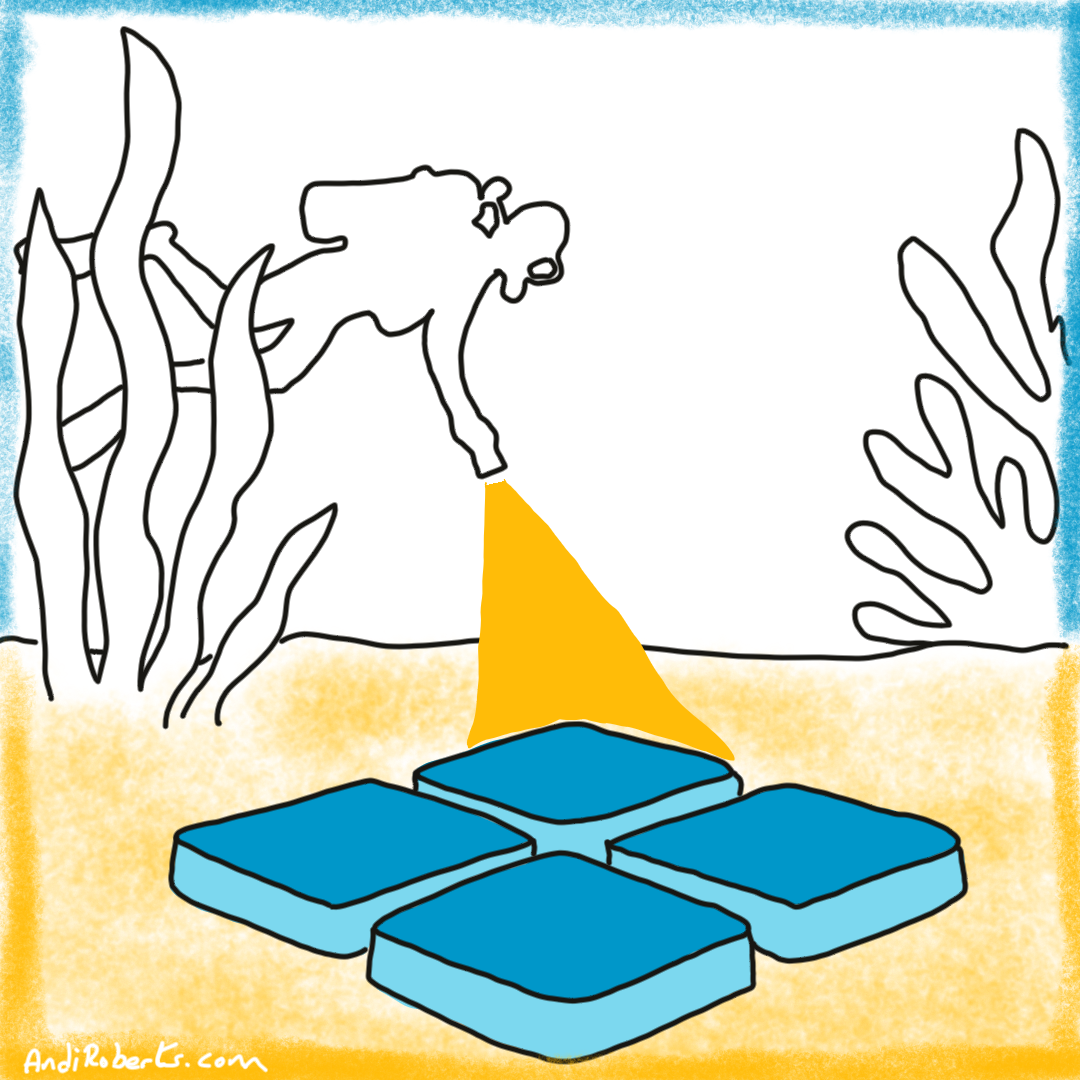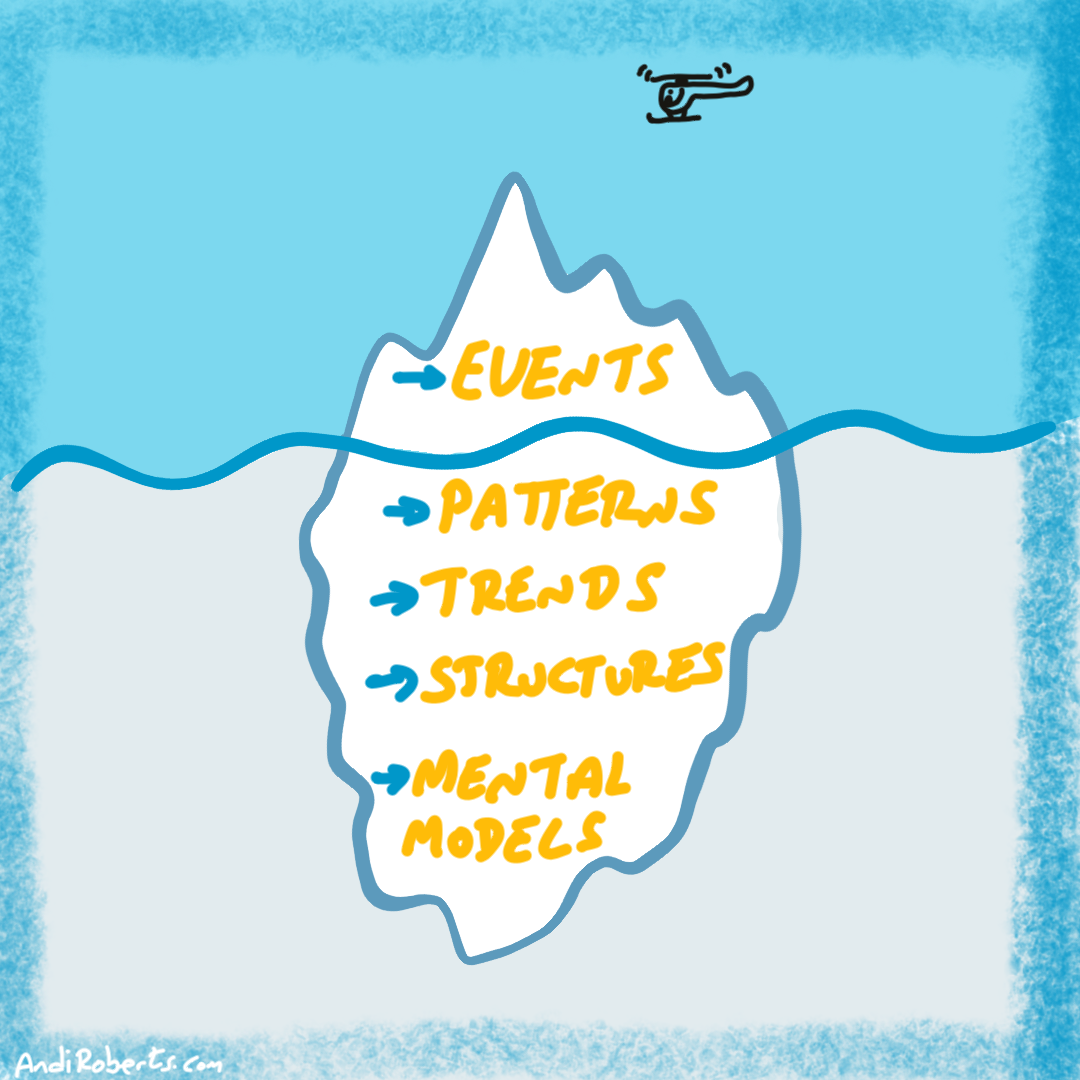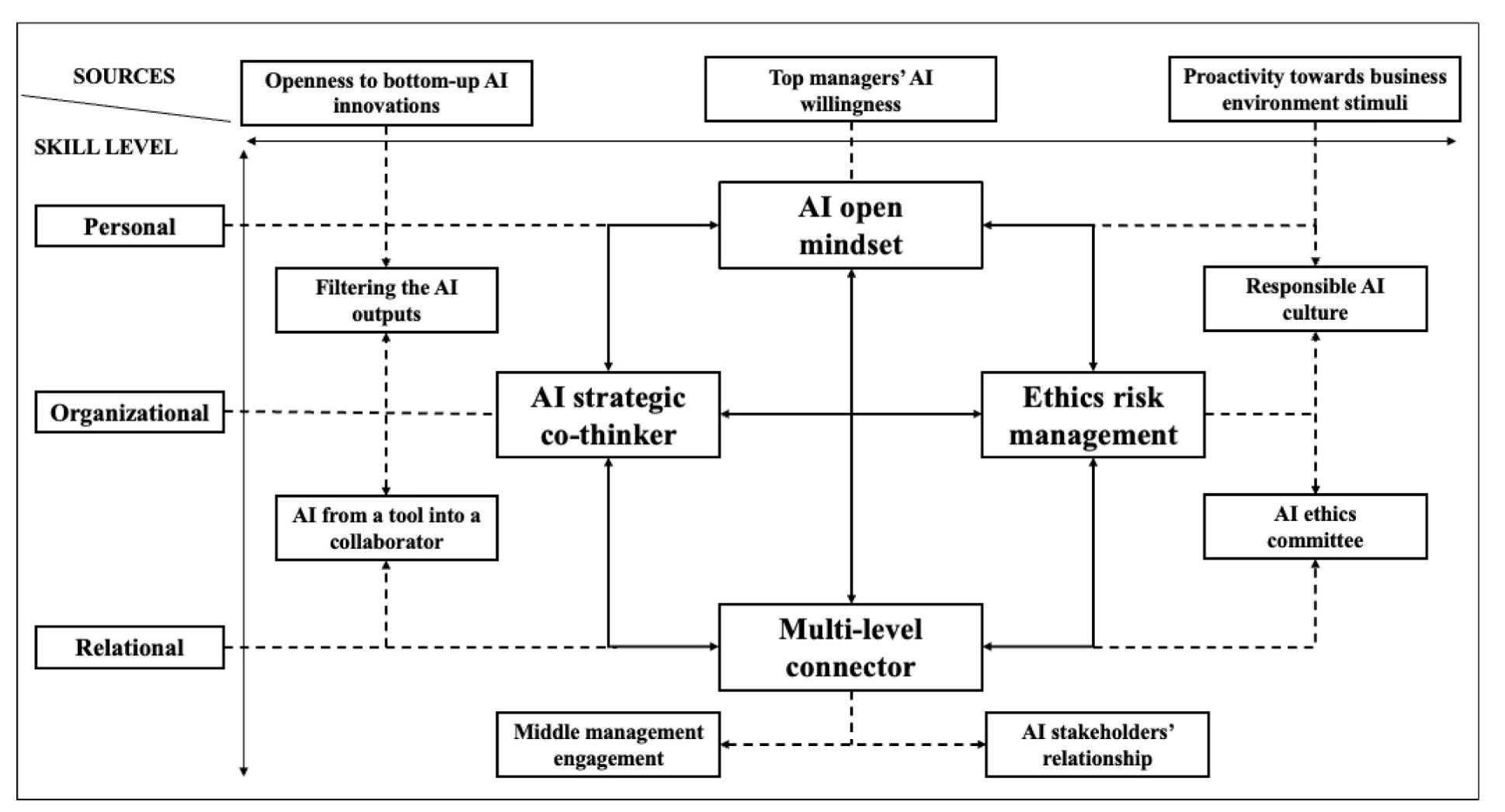The book in three sentences
John Scherer invites us to treat every moment at work and in life as a classroom where growth comes not from solutions but from the questions we ask. He proposes five such questions: What confronts me? What am I bringing? What runs me? What calls me? What will unleash me? Each one serves as a gateway to greater awareness and purpose. By practising them, we move from being driven by circumstances to stepping into our authentic selves, free to act in alignment with what truly matters.
My favourite three quotes
1. “You don’t need to change yourself; you need to become yourself. That changes everything.”
We are taught to fix, upgrade, and improve, as if who we are is never enough. John suggests the opposite. The task is not to change into someone else but to uncover the self already present, whole, creative, and wise. When we stop striving and start revealing, pressure lifts. At work, this might mean showing up as a person, not just a role. In life, it might mean trusting what feels true instead of rehearsing what others expect.
Practices
• Before your next meeting, ask: Am I here as myself or as my role?
• Journal: when do I feel most like myself, and what gets in the way?
• Replace the question “How do I change?” with “How can I show up more as who I already am?”
2. “Everyone gets the experience; some get the lesson.”
Experience alone is not the teacher. Reflection is. Without it we keep repeating the same story and wondering why. With it even frustration and failure become curriculum. This perspective shifts us from blaming others to owning our part. At work every conflict becomes a mirror. Every meeting is a lab for awareness. The difference is whether we pause long enough to ask what the experience is teaching.
Practices
• When something goes wrong, ask: what lesson is here for me?
• Keep a “lesson log”: note not only what happened this week, but what it taught.
• With a colleague, exchange lessons learned rather than stories told.
3. “Seva is sadhana.”
Seva means service. Sadhana means spiritual practice. Joined together, they tell us that our daily work is our practice. The phone call, the email, and the laundry are not distractions. They are the ground of growth. This collapses the divide between work and spirit, the sacred and the ordinary. The office, the kitchen, the meeting room all become dojos where presence, patience, and humility are tested. What counts is how we approach them.
Practices
• Before a mundane task, whisper: this too is practice.
• Treat your least favourite duty as training in patience, humility, or awareness.
• Reframe work as offering: answer an email as an act of care or connection, not obligation.
The common thread
John Scherer reminds us to stop searching outside ourselves for change. The self, the lessons, and the practice are already present in daily life. Growth is not about striving but about awareness, presence, and integration.
Key takeaways,The five questions are without doubt the key takeaway:
1. What confronts me?
“Whatever confronts you is your life asking for your attention. Your job is not to get rid of it, but to turn and face it, because hidden in what confronts you is the very thing you most need to learn.” This is called facing the tiger. Too often, we minimise or exaggerate difficulties, but naming what is in front of us awakens courage. For example, a leader avoiding a tough conversation with a colleague discovers that the conflict itself is the learning classroom. What we resist persists; what we face transforms.
2. What am I bringing?
“In every situation you bring something with you: assumptions, hopes, expectations, fears. Until you become conscious of what you are bringing, it will continue to shape the outcome without your awareness.” This question surfaces the invisible luggage we carry into the room. A manager rushing into a meeting, convinced others will resist, unconsciously seeds resistance. When we notice what we are bringing, trust or suspicion, openness or defensiveness, we create space to choose differently and set the tone for others.
3. What runs me?
“Each of us has unseen forces running our lives: old patterns, voices from our past, unconscious stories. These scripts drive us until we recognise them, and only then can we choose differently.” John likens these to background operating systems. A consultant may overwork not out of choice but from a childhood script that says, “My worth depends on performance.” Becoming aware of what runs us interrupts autopilot and makes freedom possible.
4. What calls me?
“There is something that calls each of us, an invitation from life itself. It is quieter than what confronts us, subtler than what runs us, yet when we hear it, it awakens purpose and meaning.” This is the question of vocation, but not always grand. Sometimes it is the small nudge toward truth, generosity, or creativity. A professional might notice a recurring pull to mentor younger colleagues; that quiet call, once heeded, becomes a source of vitality for him and others.
5. What will unleash me?
“To be unleashed is to live less defended, to release the deeper self waiting behind all the roles we play. The question is: what would free me to show up whole, alive, and present right now?” Often, the locks are internal: fear of judgment, fear of failing, fear of being seen. For one person, unleashing may mean saying no to tasks that diminish them. For another, it might mean naming an inconvenient truth in a meeting. To be unleashed is not reckless abandon but the freedom to bring our full self to the moment.
Other key takeaways
Persona Mapping: One of the most practical tools is Persona Mapping, a process that helps us see both the masks we present and the shadows we suppress. He argues that much of our behaviour is shaped by an unconscious dance between the qualities we most want to be known for and the traits we most fear being associated with. On one side sits the Persona: the polished image we strive to embody, perhaps “insightful,” “caring,” or “spiritually alive.” On the other side lurks the Shadow/NOT: the qualities we push away, such as “lazy,” “self-absorbed,” or “emotionally explosive.” Along with these come addictions (what we secretly crave, like approval) and fears (what we dread, such as not mattering). Mapping both sides is not an act of judgment but of liberation. By naming them, we expose the hidden scripts that run us, often installed by early “faculty” such as parents or teachers. Scherer’s insight is that the Persona and the Shadow are two halves of the same coin. The harder we cling to our Persona, the more our Shadow drives us from behind the curtain. The act of mapping gives us choice. We are no longer trapped in proving one side and hiding the other, but can act from a deeper and freer self.
Polarity Management: One of the most clarifying frameworks is Polarity Management, which shifts our approach to intractable tensions at work and in life. Instead of seeing opposites like stability and change, or task and relationship, as dilemmas to be solved, Scherer invites us to treat them as polarities to be managed. These are not problems with one right answer but ongoing dynamics that need both sides to be held in creative tension. Each pole brings gifts and dangers. Overplay one and the costs mount; neglect the other and something vital is lost. A key contribution is showing us that our persona and shadow are in constant play within us and we need both to be successful, even IF we were taught or taught ourselves to hide our shadow.
In broader leadership usage, we name both sides, spot the early warning signs of imbalance, and make deliberate choices to cycle between them. It is not a call for compromise but for stewardship of energies, perspectives, and values that need each other, within and beyond us. See THIS separate article for more on this idea.
TOV, or The Original Voice, is one of the most profound offerings, borrowing its name from a Hebrew word, tov, meaning “good” or “as it was meant to be.” John uses it to describe the deep, authentic self that exists beneath the strategies we adopt to stay safe, be liked, or succeed. Rather than something we invent or develop, TOV is what remains when we peel away the roles and masks we’ve learned to wear. He defines it as “the unique way the Life Force wants to express itself through you.” An example might be a leader who stops managing through control and begins speaking plainly and listening deeply, not out of technique but from a grounded, congruent presence. John Scherer invites us to rediscover this voice through practices like noticing our patterns, naming our Persona and Shadow, and listening to the longings that persist beneath performance. TOV is essential not because it makes us more effective, but because it connects us to who we really are, and from that place, allows us to lead, relate, and contribute with integrity and presence.
“110% presence” Describes the full, undistracted attention we bring when we show up as our whole selves. It means being mentally clear, emotionally available, physically grounded, and spiritually open. This kind of presence is not about intensity or effort but about alignment, when who we are, what we feel, and how we act are all in sync. It matters because it invites depth and trust into every interaction. Others sense when we are truly there. To be 110% present, John suggests simple but powerful practices: slow down, breathe consciously, listen with curiosity, and notice what is happening inside you as well as around you. Presence grows when we are not trying to fix, perform, or impress, but when we choose to be real and attentive.
The Greater Purpose Statement (GPS) is a concise declaration of the unique difference you are here to make simply by being fully yourself. It serves as an internal compass, guiding choices and anchoring you in your deeper purpose beyond roles or achievements. To develop your GPS, John invites the reader to explore reflection on questions such as: What stirs you deeply and brings both joy and urgency? When have you felt most alive and impactful? What pain or injustice in the world are you unwilling to ignore? And what qualities in you seem to call others forward? The aim is not to craft a slogan but to surface a truth that resonates, something that feels both humbling and energising. When articulated well, a GPS becomes a living reminder of how your presence can serve something larger.
Five things you could do this week
Five simple things I see from the book that you, or I, could do right now, even before you read the book:
1. Face one tiger directly: Choose something you have been postponing, perhaps a conversation you are avoiding or a decision that keeps slipping down your list. Instead of rehearsing excuses or hoping it will pass, bring it into the light and name it. John Scherer reminds us that what confronts us is not here to punish but to teach. Facing it is often the first step toward dissolving its power.
2. Check what you are bringing into the room: Before you walk into your next meeting or pick up the phone, pause and notice what you are carrying inside. Is it trust or suspicion, openness or defensiveness, calm or irritation? Whatever you bring becomes part of the atmosphere others experience. By taking a breath and choosing your stance consciously, you change not only your inner state but also the quality of the space for everyone else.
3. Spot one script that runs you: During the week, catch yourself in a familiar pattern, perhaps overworking, avoiding conflict, or reaching for approval. Ask yourself, what is running me right now? Often, the answer lies in voices or stories from long ago. Naming the script loosens its grip and creates the possibility of acting from a truer place instead of repeating the old programme.
4. Listen for the call: Life’s invitations are usually quieter than its confrontations. Pay attention this week to moments where you feel energy rise, where something inside leans forward, or where you sense meaning beyond the task at hand. It might be a desire to create, to serve, or simply to tell the truth. Writing these down helps you distinguish the genuine call from the noise of obligation.
5. Do one act that unleashes you: Freedom often begins with a small risk. It could be saying no where you usually say yes, telling a colleague something you typically withhold, or stepping into a task you secretly long to do but fear you are not ready for. To be unleashed is to live less defended and more present. One deliberate act of courage this week can open the door to a deeper sense of being alive.
Like all of my book summaries, this one is written to help me absorb what I have learned and to share a glimpse of the ideas with you. It is not a substitute for reading the book itself. If the content here resonates, I encourage you to seek out the full text through an independent bookstore or your local library, and let the author’s voice speak directly to you. To learn more about the author and his offerings around the book content, visit his website: Scherer Leadership Center , Youtube channel, or LinkedIn profile
Sketchnotes
Below are the sketchnotes that I made as I read the book. Often done on planes, trains or while waiting to travel:
















Leave A Comment